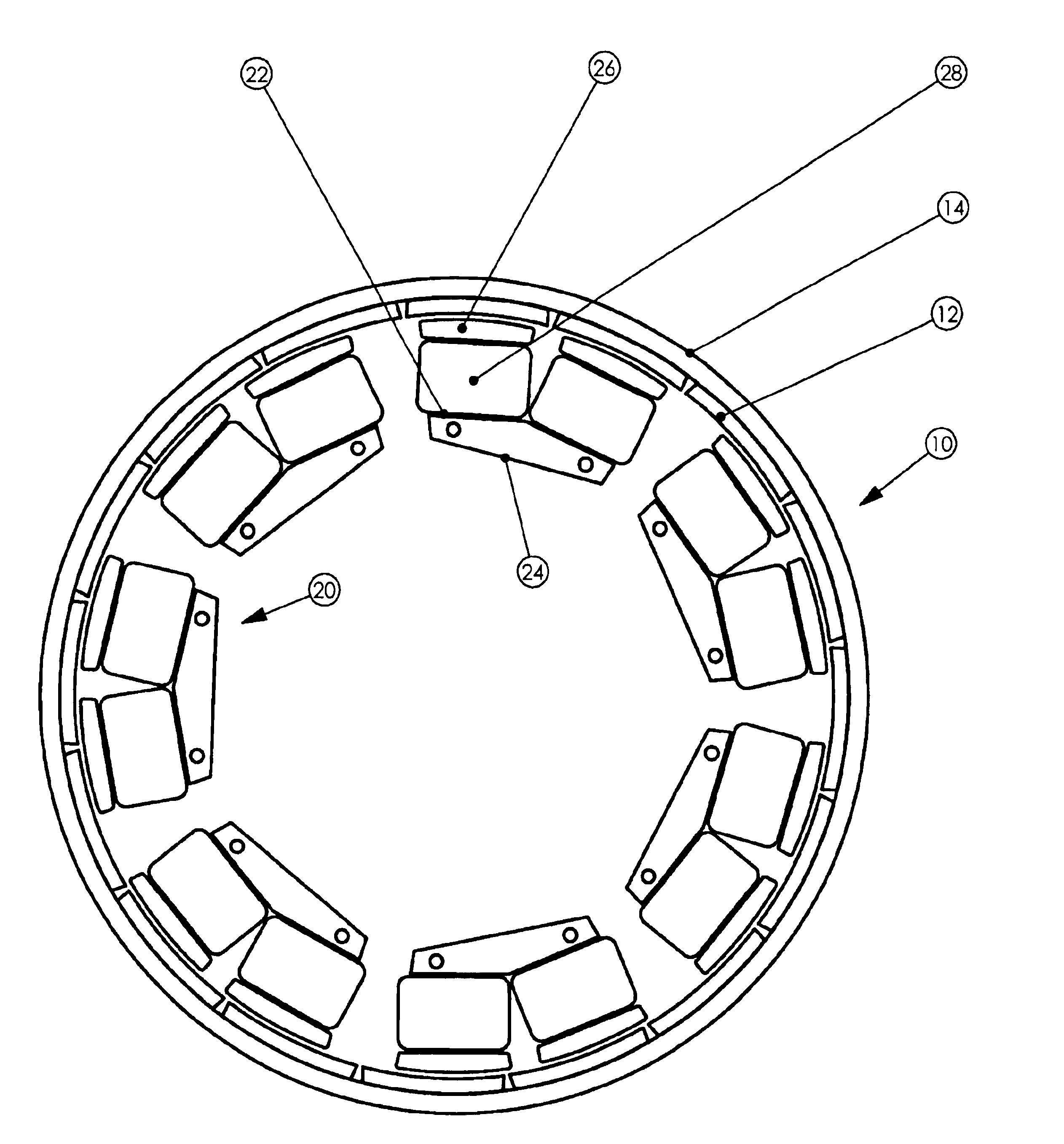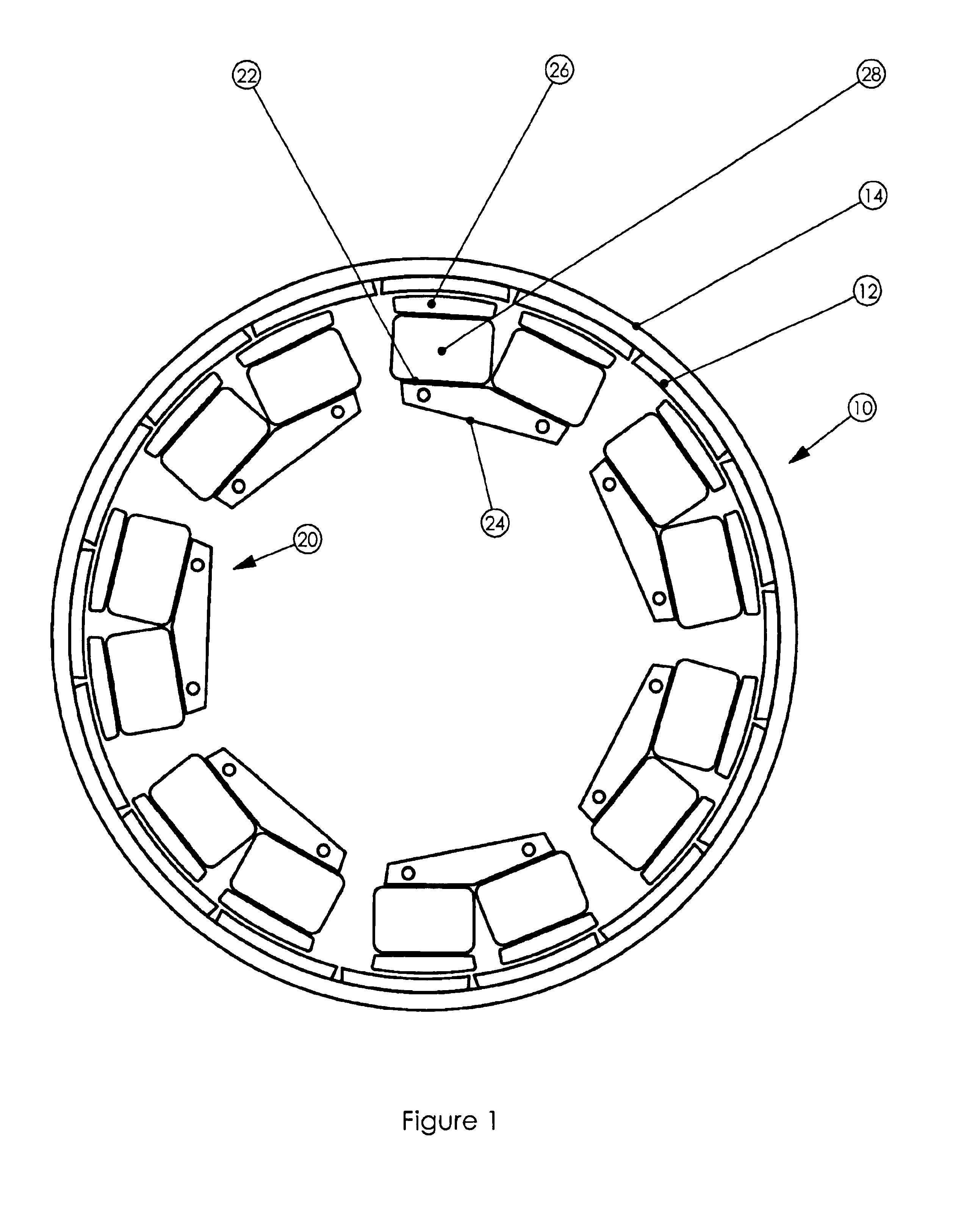Rotary electric motor having concentric annular members
a technology of concentric annular members and electric motors, which is applied in the direction of magnetic circuit rotating parts, magnetic circuit shapes/forms/construction, electric devices, etc., can solve the problems of deterring the effect of torque ripple and flux interference between adjacent poles, delaying the output torque of pulsating, and affecting the effect of torque ripple and flux interference, so as to facilitate the removal and replacement of individual stator groups
- Summary
- Abstract
- Description
- Claims
- Application Information
AI Technical Summary
Benefits of technology
Problems solved by technology
Method used
Image
Examples
Embodiment Construction
[0024]FIG. 1 is a plan diagram of a stator and rotor layout of a preferred embodiment of the motor of the present invention. Rotor member 10 is an annular ring structure having sixteen permanent magnets 12 substantially evenly distributed along cylindrical back plate 14. The permanent magnets are rotor poles that alternate in magnetic polarity along the inner periphery of the annular ring. The back plate comprises magnetically permeable material that serves as a magnetic return path between adjacent permanent magnetic poles 12. The rotor surrounds a stator member 20, the rotor and stator members being separated by a radial air gap. Stator 20 comprises seven elements or groups of pole pairs 22 of uniform construction that are evenly distributed along the air gap. Each stator group comprises a generally u-shaped magnetic structure 24 having two pole faces 26 at the air gap. Each stator group structure is separate, and magnetically isolated, from adjacent groups. The legs of the pole p...
PUM
 Login to View More
Login to View More Abstract
Description
Claims
Application Information
 Login to View More
Login to View More - R&D
- Intellectual Property
- Life Sciences
- Materials
- Tech Scout
- Unparalleled Data Quality
- Higher Quality Content
- 60% Fewer Hallucinations
Browse by: Latest US Patents, China's latest patents, Technical Efficacy Thesaurus, Application Domain, Technology Topic, Popular Technical Reports.
© 2025 PatSnap. All rights reserved.Legal|Privacy policy|Modern Slavery Act Transparency Statement|Sitemap|About US| Contact US: help@patsnap.com



